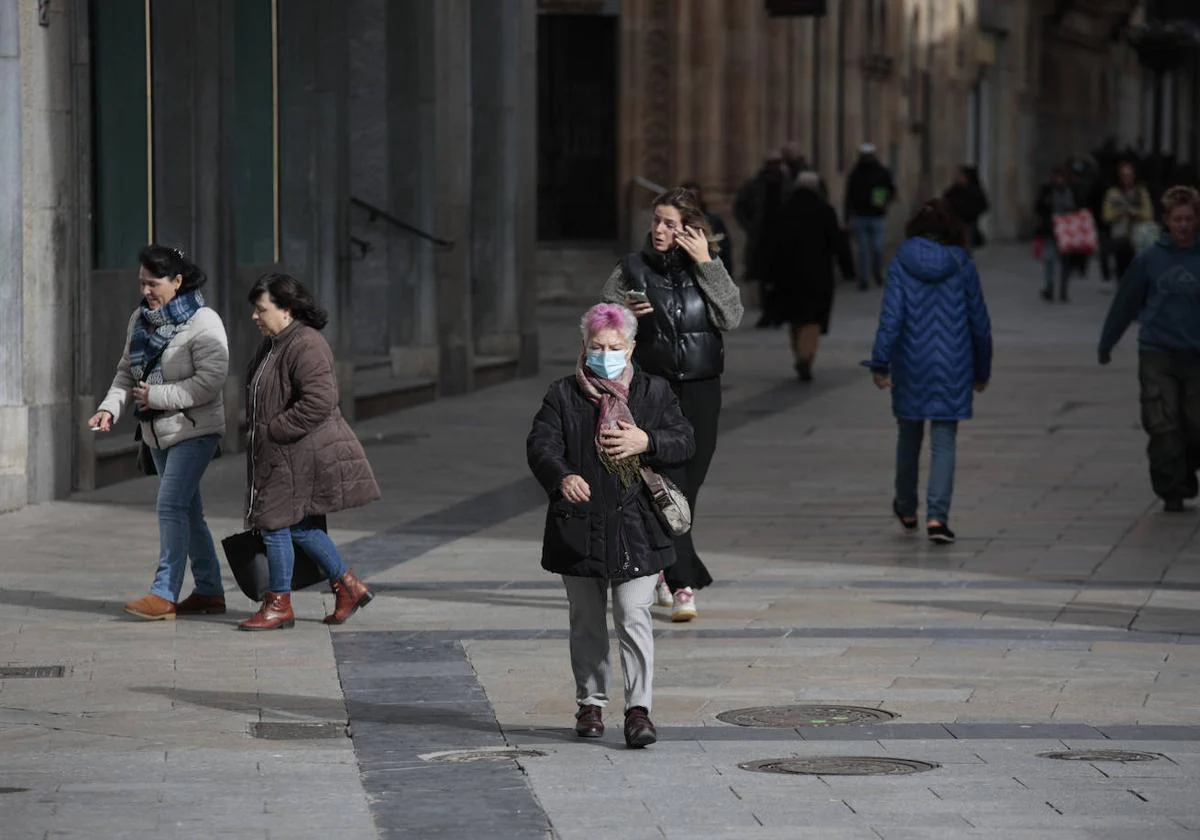Until a few months ago, masks, hydroalcoholic gels and a host of other preventive measures had become appliances from another era that were best not remembered. Last July 4, the last physical loophole that reminded us of that fateful year of 2020 was eliminated: masks in health centers, although their use was strongly recommended, were no longer mandatory.
COVID-19 has made us forget that there are other types of viruses that can spread just as easily, and that the safety measures used during the coronavirus pandemic can also help avoid widespread spread of other viruses, such as the flu. But the resurgence in cases and fears of new peaks in the coming months are a reminder of this.
After mandatory safety measures were lifted, few businesses continued to keep hydroalcoholic gel or put signs in their windows requiring masks indoors.
A brief stroll through some shops in the center of Salamanca allowed us to see what was once a common bottle of hydroalcoholic gel and signs announcing mandatory masks or capacity limits, now a “rare sight”. ».
A bottle of hydroalcoholic gel in a store in Salamanca’s central market
Alex Lopez
So, what is the actual situation of the current influenza epidemic in Spain?
The only real difference in the current flu wave compared to previous flu waves is higher hospitalization rates, and while that’s important, the death rate is not disproportionately higher compared to other flu epidemics before it.
The fact is that influenza kills many people every year, and logically this proportion will increase the larger the proportion of the population that is unvaccinated.
Last Wednesday, January 17, the President of the Association of Official Doctors of Salamanca noted that the peak of infections in Salamanca has subsided and that, as far as Salamanca hospitals are concerned, there is no “blockage” of inpatient treatment. This virus deserves attention.
Santa Cruz also noted that vaccination is crucial to prevent contagion.
What is influenza? What are its symptoms?
Influenza is a viral illness that is most common in the fall and winter and has no specific treatment other than symptoms-relieving medications.
It is a virus, so its spread and contagion occurs through the air.
Masks on the floor of Torro Street
Alex Lopez
Some symptoms of the flu include difficulty breathing, fever, chills, headache, tiredness, muscle aches, nasal congestion, or cough (usually dry).
However, influenza can cause severe illness or even death in vulnerable groups such as children or the elderly, so vaccination is highly recommended.
What measures must be taken to avoid contagion
Bottles of hydroalcoholic gel hidden in shop windows or seeing people wearing masks on the street are once again part of our daily lives, but is using a mask really effective in preventing the spread of the flu? Yes, but this is not the only measure to avoid infection; the WHO (World Health Organization) points out the basic measures: wash your hands regularly, avoid touching your eyes, nose and mouth as they are the gateway for germs to enter our bodies, or avoid being near people who are sick, Because they are how bacteria enter our bodies. It is a virus that is highly contagious and more likely to spread in occupied spaces.
So taking the precautions we’ve become accustomed to during the coronavirus pandemic can also keep us from getting the flu. But most importantly, get vaccinated, as vaccination is the most effective way to protect yourself from possible influenza infection.
On January 8, health centers in Castile and Leon made the wearing of masks compulsory, but this new regulation did not last long; ten days after it was approved, on January 18, the Ministry of Health based on the cumulative incidence of acute respiratory infection cases Data fell for two weeks in a row, and cancellation was agreed.

